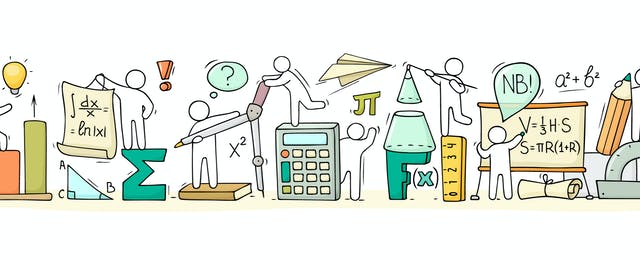课程体系
CURRICULUM SYSTEMJinStar Academic Year Mathematics Course Year 7-Year 9 数学同步课程(11-14岁) 7—9年级
The English National Curriculum is a set of subjects and standards used by all the primary and secondary schools in England to ensure all students are taught the same subjects to the same level. It ensures that all children are taught the same knowledge. English examination boards such as Cambridge International use the National Curriculum to prepare their examination courses ensuring that all topics in the National Curriculum are taught in their courses.
英国国家课程体系,是针对英国所有公立和私立学校教学的一套完整的学科和教学标准体系。它确保了所有英国中、小学生都会学到同样的学科和同等水平的知识内容。如英国剑桥国际 (Cambridge International) 等考试委员会, 会使用英国国家课程体系的内容,来为他们的考试课程做准备,并确保在其课程中教授英国国家课程体系中所包含的所有教学主题。
At JinStar International Education, all our courses are taught from the National Curriculum. Using our JinStar framework, we ensure all our courses contain the same topics from the National Curriculum to ensure all our students are taught to the same standard and the same level as it is taught in England.
今之星国际教育所有的课程均按照英国国家课程体系的标准制定。在我们的课程框架结构中,我们确保所教授的教学内容均来自英国国家课程体系,并与英国本土同年级学生的教学标准和内容相同。
学习目标
The academic year Math course will focus on helping pupils developing fluency, working mathematically and reason mathematically. Pupils will be taught to:
7-9年级数学学年课程中,我们将重点培养学生的灵活运算能力、数学理性能力和解决问题的能力。其中包括:
Consolidate their numerical and mathematical capability from key stage 2 and extend their
understanding of the number system and place value to include decimals, fractions, powers
and roots;
巩固学生在KS2(小学高年级)阶段积累的数学能力,并扩展他们对数字系统的理解,以及处理小数、
分数、幂和根相关计算的能力;
Select and use appropriate calculation strategies to solve increasingly complex problems;
拓展学生通过预先评估及多步骤运算解决问题的能力,并应用于日常生活;
Begin to model situations mathematically and express the results using a range of formal
mathematical representations;
启发学生以数学的方式对情景进行描述的能力,并使用一系列正式数学表达来展示结果;
Select appropriate concepts, methods and techniques to apply to unfamiliar and
nonroutine problems;
引导学生拥有选择恰当的概念、方法和技术去解决不同寻常问题的能力;
英文数学应用题教学介绍
Word problems in mathematics often pose a challenge because they require that students read and comprehend the text of the problem, identify the question that needs to be answered, and finally create and solve a numerical equation.
英文数学应用题对绝大多数学生来说,都是一种挑战。因为如果想要解题,学生先要真正读懂并理解题面文本的意思,才能确定答题的方向,进而得出正确结论或成功解决问题。
Many students who have English as a second language, may have difficulty reading and understanding the written content in a word problem. If a student is learning English as a second language, he might not yet know key terminology needed to solve the equation.
很多非英语母语的学生在阅读和理解英文数学应用题的时候,往往觉得困难重重,因为他们通常并不知道那些能够解决问题的关键术语用英文怎么说。
By teaching the key terminology first to students, we then work through worded maths problems with our students – by teaching students in this way, they have the terminology and vocabulary to understand the maths problems. We find that often student’s mathematical ability is very good, it is the understanding of the maths vocabulary which needs developing.
因此,我们的课程会优先讲解习题中涉及的关键术语,再和学生们一起解决数学应用题本身。通过这种递进式的教学方法,学生们就能够通过自身积累的术语和词汇,去循序渐进地独立解决一些英文数学应用题。我们发现,中国学生的数学解题能力通常都很优秀,他们只是需要进一步提高对英文数学关键术语词汇的理解。

Once students learn the key terminology used in mathematical word problems, it will be easier to learn how to write numerical equations. It is very important for our teachers to provide our students with opportunities to learn and practice key vocabulary words.
一旦学生学会了如何使用数学应用题中的关键术语,就拥有了更加灵活自如解决数学习题的能力。因此,对我们的授课教师而言,为学生提供学习和练习数学关键词汇的机会非常重要。
While key words are very important, they are only part of the process. Understanding the language in word problems is critical for all students. They need to know the meaning of words.
当然,想要更好地学习和解决英文数学题,也不能靠死记硬背关键词汇;理解词汇在数学题中的语言意义也至关重要。
What research has found is that if we ask students to only rely on knowing that certain key words signal specific operations, we can actually lead them away from trying to understand the problems. They will tend to look only for those words and whatever numbers are in the problem, even if they are not relevant to the answer. This will not help them be mathematically proficient later, even when they are proficient with English.
通过我们的调查发现,如果只要求学生死记硬背关键词汇与特定解题方法的搭配,反而会弱化他们对问题的理解能力。他们在读题时会下意识搜寻熟悉的词汇和数字,即使这些内容与最终解题的思路和答案并没有什么关系。 一旦养成这样的学习思路,就算学生的英语水平再好,也无助于他们在数学学习方面的成长。
Our process with teaching worded maths problems, is to read the problem several times with the student then discuss what the problem is trying to solve. Finally, we look at mathematically working out the problem to get the answer. Teaching students to read questions thoroughly is a skill not only necessary for maths – this skill is applicable to all subjects. We want students to know the meaning of the words, but also to see them in the context of the whole problem.
我们在实际教学中采取的教学方法是,通过带领学生多次阅读题面,然后引导他们去思考究竟要解决的是什么问题。这样的教学思路能够引导学生自主思考、主动搜寻可用的数学工具或研究方式以获得最终答案。能够深入剖析并理解题面的能力,不仅可以应用于数学学习中,还能够广泛应用于各个科目的学习实践中。我们希望学生不仅能够从单字含义的层面去理解关键词汇,也能在整个题目文本的语境下去理解它们。
课程介绍
Due to the higher requirements of secondary mathematics, the programme of study for Year 7,8 & 9 is organised into apparently distinct domains. Pupils will be taught to:
由于七、八、九年级的学习,对学生灵活运用数学的能力和数学思维的培养有了更高的要求,因此我们的教学计划拥有更加细致的划分。课程学习将:
consolidate their numerical and mathematical capability from key stage 2 and extend their understanding of the number system and place value to include decimals, fractions, powers and roots;
能够引导学生选择并使用适当的计算策略来解决复杂的问题;
use algebra to generalise the structure of arithmetic, including to formulate mathematical relationships;
能够使用代数来总结算术结构,包括形成数学关系;
substitute values in expressions, rearrange and simplify expressions, and solve equations;
能够在表达式中替换相关值,重新排列并简化表达式,最终对方程式求解;
move freely between different numerical, algebraic, graphical and diagrammatic representations for
example, equivalent fractions, fractions and decimals, and equations and graphs;
能够灵活应用分数、小数、方程、图形和图表的搭配;
develop algebraic and graphical fluency, including understanding linear and simple quadratic functions;
能够理解线性函数和简单的二次函数;
use language and properties precisely to analyse numbers, algebraic expressions, 2-D and 3-D shapes,
probability and statistics;
能够精确地使用数学语言和属性来分析代数表达式、二维和三维形状、概率和统计;
extend their understanding of the number system; make connections between number relationships,
and their algebraic and graphical representations;
扩展学生对数字系统的理解,能够在数字关系、相关的代数和几何图形之间建立联系;
extend and formalise their knowledge of ratio and proportion in working with measures and geometry
, and in formulating proportional relations algebraically;
扩展并巩固学生关于几何比率和比例的知识;
identify variables and express relations between variables algebraically and graphically;
引导学生识别变量并以代数和图形的方式表达变量之间的关系;
make and test conjectures about patterns and relationships; look for proofs or counter-examples;
引导学生对实验进行猜想,并寻找证据或反例;
begin to reason deductively in geometry, number and algebra, including using geometrical constructions;
引导学生完成对几何、数字和代数的推论和演算,比如使用几何结构等;
explore what can and cannot be inferred in statistical and probabilistic settings, and begin to express
their arguments formally;
引导学生进行对统计和概率设置的推断和猜想,并进一步正式表达论点。
学习使用书籍介绍
Written by well-respected authors, and chosen by many top independent schools in the UK, the books we select for students provide a comprehensive, structured resource, which covers the full secondary stage framework and seamlessly progresses into the next stage. These brightly illustrated Coursebook and Workbook for Stage 7 – 9 offer a comprehensive introduction to all topics covered in the National syllabus. Worked examples show students how to tackle different problems, and plenty of exercise questions prepare students for the different types of question they will face in their exam. Coverage of the Problem Solving framework is integrated throughout the course, with questions relating to the framework statements highlighted in the Coursebook and Practice Work Book.
课程使用的教材由备受尊敬的作家编写,提供了一个易于理解且高度结构化的,涵盖中学三个阶段数学框架的知识体系。每个年级的教材均包括一本课程用书和一本习题用书(2本书)。教材内容以英国国家教学大纲为基础 ,为7 - 9年级提供了全面的学习主题介绍。而工作实例则向学生展示了如何处理不同的问题,大量的练习题为学生做好了充分的应试准备。解决问题的思路与框架是贯穿整个课程的主要内容,而与框架陈述相关的诸多问题,也是教材中的重要组成部分。


